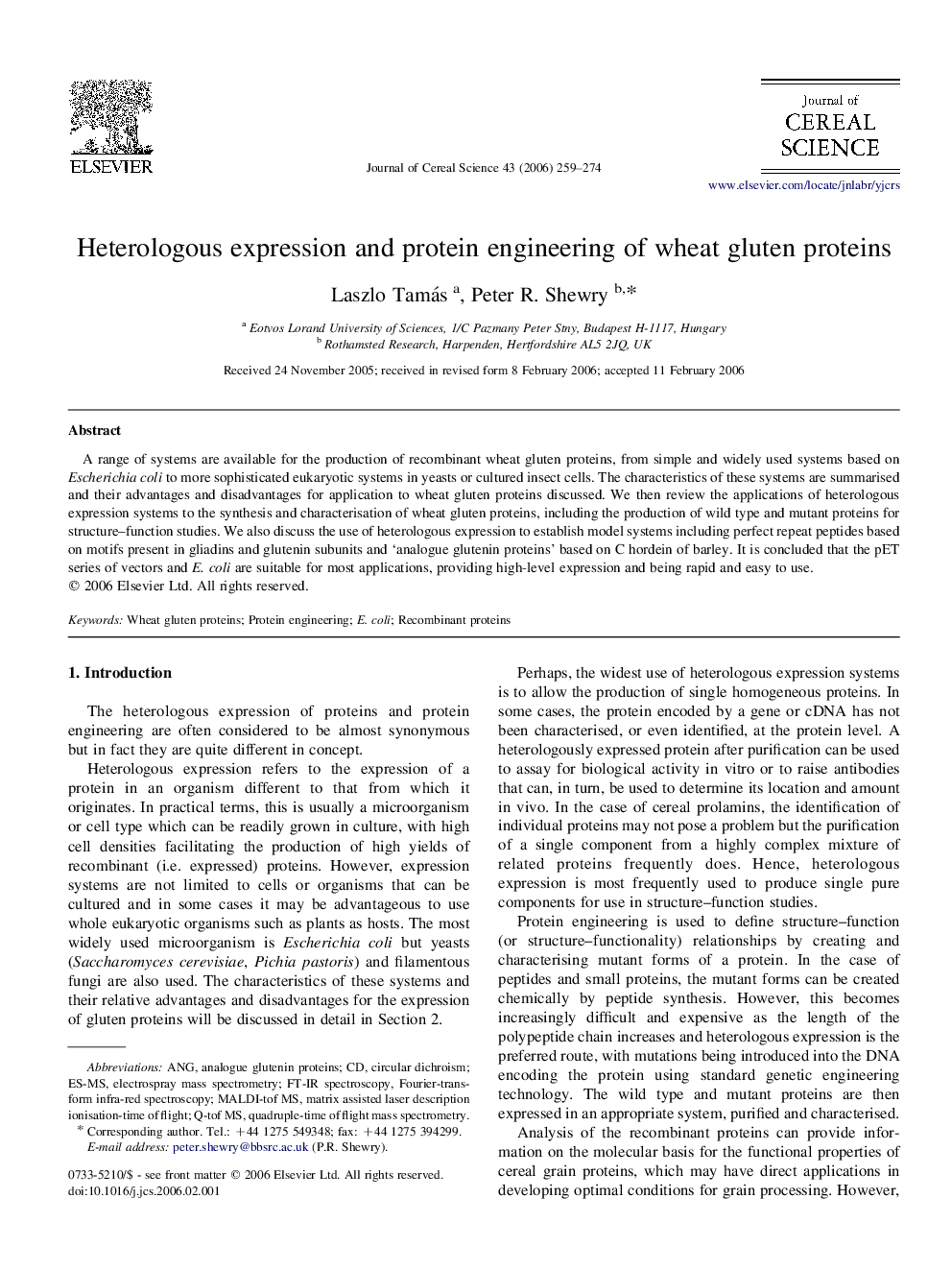| Article ID | Journal | Published Year | Pages | File Type |
|---|---|---|---|---|
| 4516824 | Journal of Cereal Science | 2006 | 16 Pages |
A range of systems are available for the production of recombinant wheat gluten proteins, from simple and widely used systems based on Escherichia coli to more sophisticated eukaryotic systems in yeasts or cultured insect cells. The characteristics of these systems are summarised and their advantages and disadvantages for application to wheat gluten proteins discussed. We then review the applications of heterologous expression systems to the synthesis and characterisation of wheat gluten proteins, including the production of wild type and mutant proteins for structure–function studies. We also discuss the use of heterologous expression to establish model systems including perfect repeat peptides based on motifs present in gliadins and glutenin subunits and ‘analogue glutenin proteins’ based on C hordein of barley. It is concluded that the pET series of vectors and E. coli are suitable for most applications, providing high-level expression and being rapid and easy to use.
